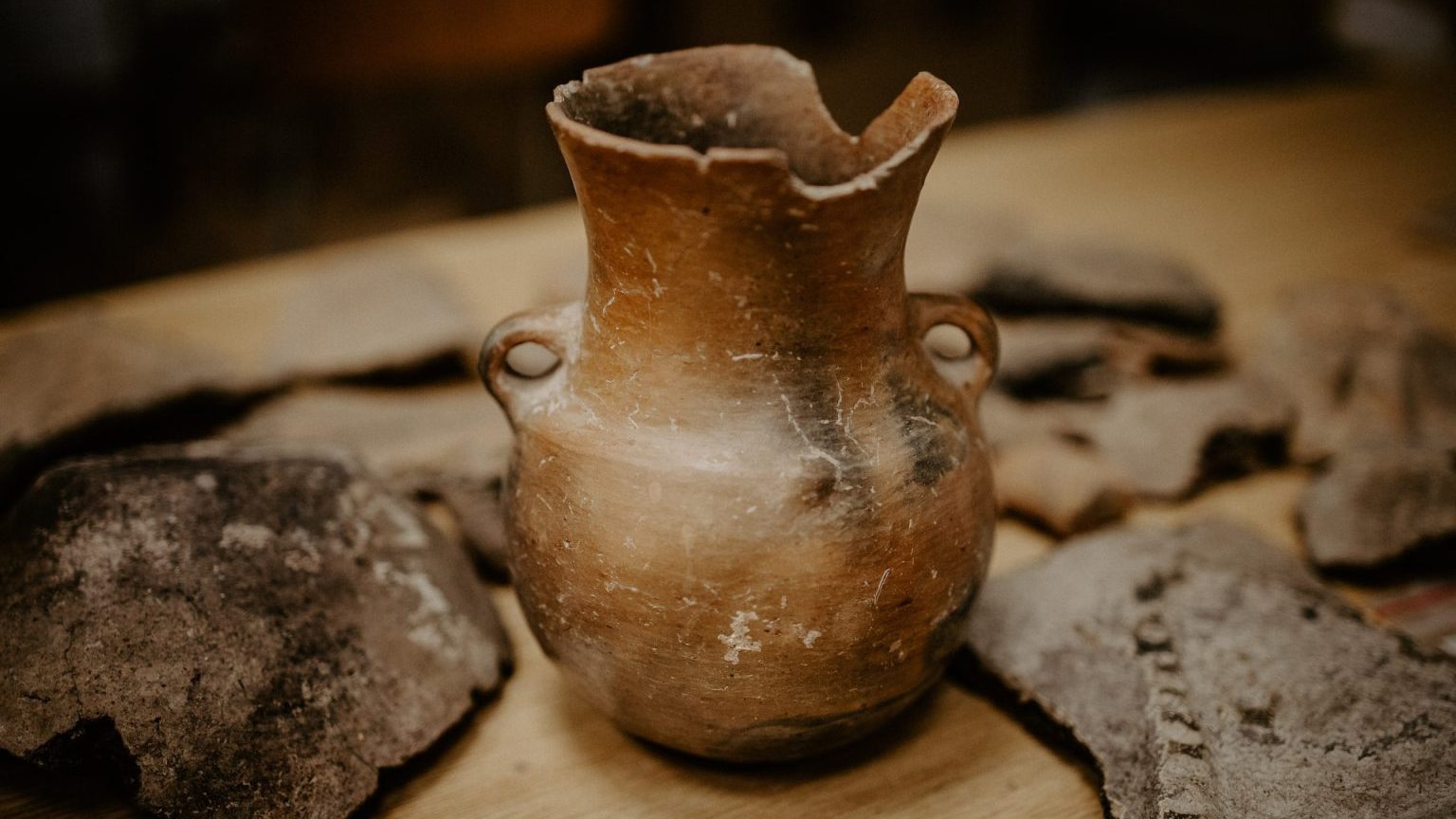Humans Have Been Drinking Wine for 8,000 Years

Wine’s influence on human culture cannot be overstated. Sacrament, entheogen, commodity, social lubricant, dinner accompaniment—innumerable instances for drinking this beloved beverage exist. Archaeology has produced many examples of fermentation’s importance throughout history; before refrigeration it was the means for storing food. Just so happens wine is the most pleasing example of this process.
When did wine first hit our taste buds? While there is evidence of an alcoholic “rice and grape” beverage in China in 7000 BC, new research shows archaeological proof that wine has been around since at least 6000 BC in the Republic of Georgia. This pushes back the previous date from a site in Iran roughly a millennia.
Published in Proceeding of the National Academy of Sciences (PNAS), the team, lead by Patrick McGovern, Scientific Director of the Biomolecular Archaeology Laboratory for Cuisine, Fermented Beverages, and Health at the University of Pennsylvania Museum, chemically studied the residue of eight jars. This period’s reliance on pottery offers a clue that pottery itself might have been created, at least in part, to store this unique new beverage:
Pottery, which was ideal for processing, serving and storing fermented beverages, was invented in this period, together with many advances in art, technology and cuisine.
The region these jugs were discovered in—Shulaveris Gora and Gadachrili Gora—boasts ideal environmental conditions for wine production, with fertile, rolling hills, an annual average rainfall 13.8 to 21.7 inches, and a yearly average temperature of 55.4 degrees.
Whether the grapes were wild or domesticated remains a topic of debate among the extensive team—the paper boasts eighteen authors. Considering that European grapes today account for nearly 100 percent of wine, discovering the origins of this magical grape would be a boon for researchers, if for nothing else than to boast about it over wine. As the study states:
Today, there are some 8,000-10,000 domesticated cultivars of wine, raisin, and table grapes, including a range of colors from black to red to white. They owe their origins to human selection and accidental crosses or introgression between the incoming domesticated vine and native wild vines. These varieties account for 99.9% of the world’s wine production, and include famous western European cultivars such as Cabernet Sauvignon, Sangiovese, and Tempranillo, and Chardonnay.
The team focused on pottery from the Neolithic Period, but, they write, even more enlightening evidence from the pre-Pottery period might await, bringing us all the way back to 10,000 BC. The four millennia between then and the era of these jugs included an emphasis on domesticating new plants, which could mean that ancient humans merely had more crude vessels for their libations.
Humans likely had beer at this earlier date, as evidenced by the growing of einkorn wheat in famous excavation sites at Göbekli Tepe and Nevali Çori. Some researchers speculate that the cultivation of wheat commenced once some crafty farmer mistakenly engineered beer. The things we do for alcohol.
McGovern wonders if the beer drinkers also had wine on hand. There might never be a way to tell. But one can dream.
—
Derek is the author of Whole Motion: Training Your Brain and Body For Optimal Health. Based in Los Angeles, he is working on a new book about spiritual consumerism. Stay in touch on Facebook and Twitter.




